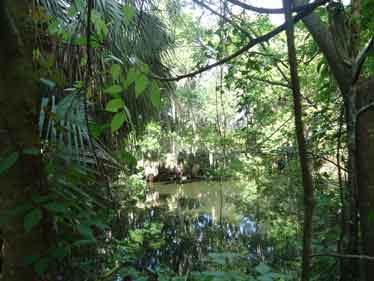Graduate Research Project

My research explores relationships of power between the people of the Americas, with a focus on the North American Spanish borderlands of Florida in the 18th and 19th centuries. At the fringes of the European empires that occupied the hemisphere, people in borderlands communities lived in contact zones where they developed relationships and lived lives that defy our entrenched narratives of colonial and national dominance and indigenous retreat and subjugation. Instead, power relationships in the borderlands were often ambiguous and multi-directional. Native Americans controlled geographies and affected the imperial centers in ways previously overlooked in the histories of European and Anglo-American power and domination.
Florida was a remarkably contested borderlands, where sovereignty shifted from Spain to England (1763), back to Spain (1783) and then to the United States (1821). Regardless of imperial and national claims and concerns, Florida was known as Indian country from the colonial period well into the 19th century. The Florida borderlands had become a destination for a diaspora of Native and African Americans seeking freedom and autonomy. Beginning in the mid-18th century, hundreds of Creeks left Creek country, moved south and became Seminoles in Florida. Likewise, fugitive slaves escaped to Las Floridas and disappeared into the swampy hinterland, many joining Seminole communities. By the early 19th century, hundreds had become thousands. Florida Indian country was coveted by European empires and the United States, and at the same time recognized as a threat to the developing slave society of the American South and to the nascent national identity of the American republic. The freedom of fugitive slaves, the autonomy of Native Americans, and the collaboration between them undermined both the property rights of slave-holders and the widespread racial ideologies of the republic.
While Creek history and Seminole history are often treated separately by Americanists and ethnohistorians, I am intrigued by the connections between them. Indeed, it is almost impossible to separate their stories. During the second half of the 18th century, both Creeks and Seminoles controlled vast swaths of Florida and participated in a robust, international trade network. During the first half of the 19th century, the population of Native Americans in Florida grew. More and more Creeks chose to leave Creek country and become Seminoles rather than attempting to placate the expansive republic of the United States though assimilation projects and ultimately, removal. Together, Creeks and Seminoles disputed U.S. hegemony with a commitment and level of sacrifice unmatched in the era of Jacksonian Indian Removal. They fought several wars against the U.S. military: the Redstick and Patriot wars of 1812 and 1813, the battles at Negro Fort in 1816, the First Seminole War of 1818, and the Second Seminole War from 1836 to 1842. By connecting these campaigns to thwart U.S. dominance and recognizing them as part of a longer story of Creek and Seminole history, I have developed an historical question that I hope has the potential to provoke examination of indigenous agency, resistance, and power: what explains the uniquely fierce resistance of Creeks and Seminoles to policies of American expansion and Indian removal?
My research so far suggests that Creek and Seminole Indians who resisted surrender and removal did so because they had derived political and economic power from conditions and strategies I am calling folk capitalism. I am in the process of developing four main aspects of this process for my dissertation: 1) Creeks and Seminoles accumulated political and economic power through their participation in the deerskin and leather trade and their position in the global capitalism of the Atlantic World during the colonial and early national era; 2) Creeks and Seminoles appropriated and exploited European economic technologies of capitalism such as capital accumulation, international trade and diplomacy, credit, debt, currency, and the commodification of natural resources; 3) Creek and Seminole hunters, traders, political leaders, and communities devised a New World capitalism by adapting European economic technologies to Muskogee cultural systems of gender, reciprocity, moieties, and kinship; and 4) Creeks and Seminoles shared access to the refuge and resources of Las Floridas. These were not the weapons of the weak but of the strong. Through a careful analysis of archival and archeological sources, I will explore the strategies Creeks and Seminoles developed to exploit the political economy of colonialism and the geographies of the Americas. My dissertation will demonstrate that Creeks and Seminoles share a history of agency, resistance, and power wherein they appropriated the colonizers’ political economy and reshaped it according to their society and culture—while accumulating enough social, political, and economic capital to contest colonial subjugation and threaten the expansion of the American republic.
—Feather Crawford is a doctoral candidate in the Department of History. Her field of study is U.S. history. She focuses on political, social, and economic history in the 18th and 19th centuries, the North American Spanish borderlands, Native American history, U.S.–Latin American relations, and U.S. colonialism. She currently serves as a GTF in the Latin American Studies Program.
